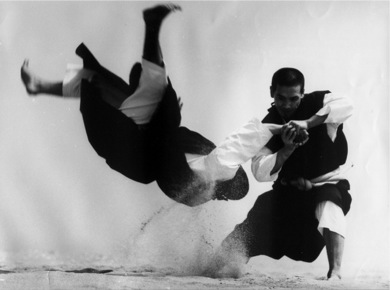Summary
Kempo is a Japanese form of unarmed martial arts. The style originated in China and was brought to Japan 700 years ago. Though it is a fighting style, Kempo places little to no emphasis on the fight. The Kempo practitioner gets a feel for their opponent and, once their opponent strikes, attempts to end the fight as quickly as possible. Unlike many forms of martial arts, Kempo is strictly a defensive form of fighting. Most Kempo schools do not teach their students how to attack their opponents.
History / Origins
ETYMOLOGY
Kempo is the transliterated version of the original term “Kenpo.” The difference in spelling and annunciation are caused by the application of Traditional Hepburn Romanization. The word Kenpo means “Fist Law” or “Law of the Fist.” The generic meaning of the term, coupled with people using it as a blanket term for martial arts, has led to many divergent definitions.
BEGINNINGS
Kempo was brought to Japan 700 years ago by the Yoshida Clan. It was soon learned and practiced by the Komatsu Clan. During this time, the two clans developed the style to be specifically tailored for Japanese combat. Kempo was used mainly for self-defense against the many Japanese fighting arts from the 12th century. Many changes would occur throughout time and eventually, the style of Kempo practiced by the Japanese would have little in common with the original style brought over from China. Kempo became such an effective form of defense that many schools would later claim that their style of fighting was derived from Kempo, even when they had nothing to do with Kempo. Some schools even claimed their masters received formal training from Kempo masters.
PRESENT DAY
Present-day Kempo is practiced all over the world. Many variations sometimes differ greatly. Some Okinawan groups currently use the term “Kenpo” as an alternate name for their martial arts systems, as with the International Shorin-Ryu Kobudo Federation. In 1920, Kempo was brought to Hawaii and quickly spread. This migration is responsible for the present-day form of American Kempo. It was brought to the American mainland by Ed Parker, a Hawaiian practitioner, in 1957. American Kempo mixes many styles and has been influenced by Kempo practitioners from China, Japan, Okinawa, and Hawaii. The modern style of American Kempo blends circular and linear movements.
FOLKLORE
According to legend, the Chinese monks who developed the Five Animals in Shaolin Kung Fu (and later in Kempo) had begun by practicing breathing and exercise techniques known as “Chi Gung.” Bodhidharma, the legendary Indian monk, supposedly taught it to them. The point of the exercises was to develop one’s inner power as opposed to using external strength. In times of war, soldiers seeking refuge were thought to have stayed with the monks. To repay them, the soldiers would teach them the fighting styles they were taught to use in war. Blending these styles with their exercises and techniques, the monks developed their brand of Kung Fu that would later influence Kempo.

| COUNTRY OF ORIGIN: | Japan |
| TIME OF ORIGIN: | - |
| PRACTISED: | Approx. 700 years old |
| FOUNDERS: | – |
| FOCUS: | |
| ALSO KNOWN AS: | - |
| PARENTHOOD: | – |
| DESCENDANTS: | Shaolin Kung Fu |
| OLYMPIC SPORT: | No |
NOTABLE FEMALE PRATITIONERS
–
NOTABLE MALE PRATITIONERS
–

| NATIONALITY: | |
| DATE OF BIRTH: | |
| AGE: | Approx. 700 years old |
| BORN: | Shaolin Kung Fu |
| RESIDENCE: | - |
| ALSO KNOWN AS: | - |
| OCCUPATION: | |
| JOB TITLE: | – |
RELATED FEMALE INDIVIDUALS
–
RELATED MALE INDIVIDUALS
–

| COUNTRY: | Japan |
| LOCATION: | - |
| FOUNDED: | - |
| OPERATIONAL: | Approx. 700 years old |
| FOUNDERS: | – |
| ALSO KNOWN AS: | - |
| SECTOR: | |
| DESCRIPTION: | – |
| WEBSITE: | - |
ACOSSIATED INDIVIDUALS
–
ACOSSIATED ATHLETES
–
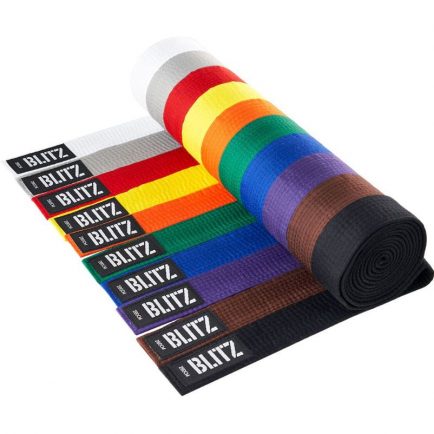
Blitz Coloured Belt
Traditional and versatile, 4.5cm wide with high quality stitching, extremely durable and easy to tie. Ideal for training and grading.
£3.99

Shin & Instep Pads
Padded elasticated slip on shin and instep pads. Ideal for all types of martial arts. Towelling inner ensures comfort. Sold in pairs.
£9.99
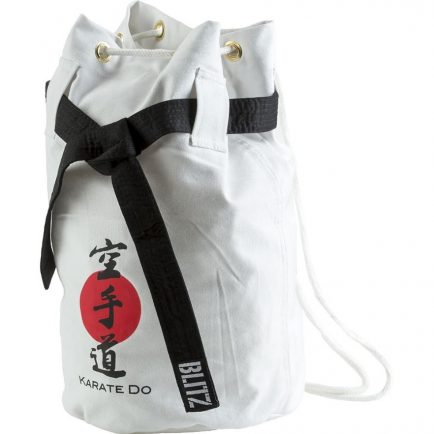
Karate Duffle Bag - White
Drawstring duffle bag made from 14oz cotton canvas. Black belt detail fastens at the front of the bag. Single cord shoulder strap.
£10.99

Dipped Foot Guards
Minimise the risk of injury and train in confidence with the incredibly lightweight Blitz Dipped Foam Foot Guards. Ideal for Karate.
£23.99

Dipped Foam Gloves
Moulded to fit securely to the knuckles with an elastic Velcro wrap strap around the wrist. Lightweight and compact.
£23.99
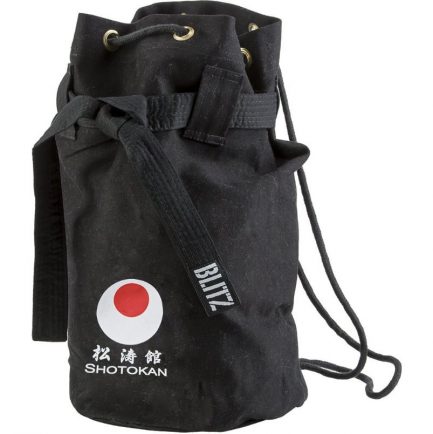
Shotokan Duffle Bag
Complete with printed martial art style motif on the front. Dimensions: 40cm wide x 45cm high x 78cm circumference.
£12.99
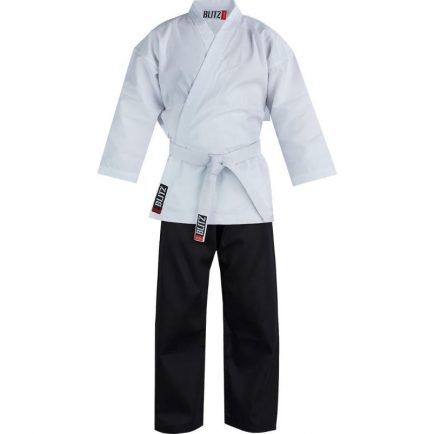
Student Karate Suit
Ideal first gi for students. Traditional wrap over Karate suit. Trousers have an elastic/tie waist for a precise and comfortable fit.
£24.99

Wacoku Body Protector
Compulsory for male and female World Karate Federation competitions. Protects against blows and strikes to the chest.
£66.99
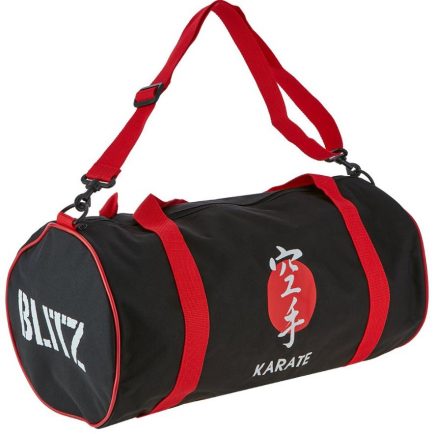
Karate Drum Bag
Single zip barrel design with two carry handles and one adjustable shoulder strap that's easy to remove when not needed.
£22.99

Gloves With Thumb
Lightweight and durable glove that is comfortable to wear. An enclosed thumb section makes them popular for sparring.
£10.99
Practices
PHILOSOPHY
Due to the number of updates that are consistently being made to the style, there are different interpretations of what the philosophy of Kempo is. One example is the Nine Principles listed in A Book of Five Rings. These principles are:
- Do not think dishonestly.
- The Way is in training.
- Become acquainted with every art.
- Know the ways of all professions.
- Distinguish between gain and loss in worldly matters.
- Develop intuitive judgment and understanding of everything.
- Perceive those things which cannot be seen.
- Pay attention even to trifles.
- Do nothing which is of no use.
Of course, this is only one interpretation of Kempo’s tenets that exist among many. All Kempo schools do preach a complete understanding of the art and incorporating other styles, however.
TECHNIQUES
This section needs collaborators. If you want to contribute, please email info@awakeningfighters.com
TRAINING
This section needs collaborators. If you want to contribute, please email info@awakeningfighters.com
RANKS & GRADING
This section needs collaborators. If you want to contribute, please email info@awakeningfighters.com
WEIGHT CLASSES
This section needs collaborators. If you want to contribute, please email info@awakeningfighters.com
Rules / Rulesets
RULES / RULESETS
Kempo is a defensive martial art. Little to no attention is paid to attacking the opponent. The main goal of Kempo is to disarm and disable the attacker while ending the fight as quickly as possible. Kempo is exclusively an upright form of martial arts that uses hand strikes, kicks, elbows, throws, knees, and joint locks. The style employs a belt-ranking system similar to Karate or Judo. Due to the amount of modification and different practitioners, there is a varied curriculum of moves among Kempo schools. This constant fluctuation ensures the style is not traditional or stagnant. It is constantly changing.
Organisations & Historical Places
ORGANISATIONS
(If you are interested in having your organisation listed, please contact us at info@awakeningfighters.com)
HISTORICAL PLACES
This section needs collaborators. If you want to contribute, please email info@awakeningfighters.com
Popular Culture
POPULAR CULTURE
Kempo has been practiced widely by multiple schools and countries, which has seeded it into popular culture. In the 1991 revenge film The Perfect Weapon, the main character is enrolled in a Kempo school by his father. Years later, he uses his martial arts skills to avenge the death of his master. Another movie featuring Kempo is the 1993 film Street Knight. The plot is about a former cop who must use his martial arts skills to fight against gang members who are out to get him. Other main characters have been shown using Kempo onscreen in films such as the 2010s The Killing Machine and the 1974 martial arts movie Sister Street Fighter.
Useful Links
USEFUL LINKS
Links coming soon
References
REFERENCES
- http://kenpokarate.com/nine_principles.html
- http://www.mikemayors.com/kempo/index.php?key=&pg=about&PHPSESSID=e4bd9c132e37ac79ee8b799705ef0b6f
- http://www.shorinjikempo.net/en/about-shorinji-kempo/shorinji-kempos-history/
- http://www.blackbeltmag.com/daily/traditional-martial-arts-training/karate/10-kenpo-laws-every-martial-artist-should-know/
COLLABORATORS
No Collaborators found




